
 back to all news
back to all news
Women’s History Month: Perspectives from SEAS Women in Sustainability

In honor of Women’s History Month, we asked our women faculty and researchers to share their perspectives as members of the sustainability field and to offer advice to the next generation of women following in their footsteps.
We thank the following women for their participation: M’Lis Bartlett (MLA '09, PhD '15), Lecturer, Environmental Fellows Program Manager; Rosina Bierbaum, Professor, Environmental Policy and Planning; Lisa DuRussel (BS '02, MLA '06), Assistant Professor from Practice, Landscape Architecture; Ayumi Fujisaki-Manome, Assistant Research Scientist, Geospatial Data Sciences; Sara Hughes, Assistant Professor, Environmental Policy and Planning; Inés Ibanez, Associate Professor, Ecosystem Science and Management; Pamela Jagger, Associate Professor, Sustainability and Development; Shelie Miller, Director, Program in the Environment, Jonathan W. Bulkley Collegiate Professor of Sustainable Systems, and U-M Distinguished Faculty Fellow in Sustainability, Sustainable Systems; Ivette Perfecto, James E. Crowfoot Collegiate Professor of Environmental Justice, Ecosystem Science and Management; and Michaela Zint, Associate Dean for Academic Affairs and Professor, Behavior, Education, and Communication.
Do you feel there are different perspectives that women bring to their field? If so, can you provide some examples of those perspectives?
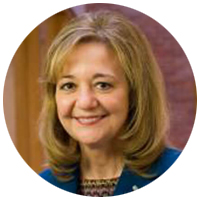 |
Rosina Bierbaum:Diversity of all sorts brings new perspectives to complex problems. Two examples: 1) In 2017, in my work with the Global Environment Facility, we held a stakeholder engagement workshop in Ethiopia that included men, women, elderly, and youth to find ways to improve food security. We went in thinking that increasing food production was the only solution and that new crops needed to be identified. After everyone had a chance to speak, it turned out that the farmers were likely being underpaid by the middlemen because they didn’t know how much their animals were worth. The identified priority intervention was, therefore, to enable farmers to purchase scales to weigh sheep, to give them power to negotiate. Without enabling all voices to be heard—including the normally excluded women—the outcome would have been very different (and dominated by Western thinking). 2) S. Jim Gates, fellow member of Obama’s Council of Advisors on Science and Technology, reported on a math class where students worked in small groups. In one group, two Caucasian students led discussions into a mathematical dead end. An African-American student took a different tack, and when their blackboard work was finally noticed, unstuck the group, and the problem was solved. “Together, the now cooperative members became more efficient as problem solvers.” |
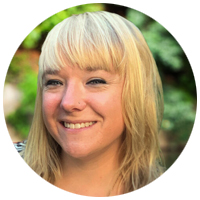 |
Lisa DuRussel:In 2015, my colleagues and I were recognized as part of the Beverly Willis Architecture Foundation’s “BUILT x WOMEN NYC” Exhibition, which identified outstanding built environments designed or constructed by women. Our team was represented by 22 women—by far, the most representation of any project receiving an award. As a woman in design/construction, it became apparent how underrepresented we were when in the field. So, why was this project successful? Thinking back on it, I believe it was because we supported, empowered, and advocated for each other and our collective success. |
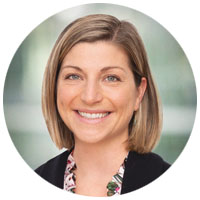 |
Sara Hughes:We all bring our unique life perspective to our work—the questions that interest us, the ways we go about answering them, and the tools we use for communicating our findings. Women have distinct, but varied, perspectives and having those perspectives as part of the scientific enterprise is critical. |
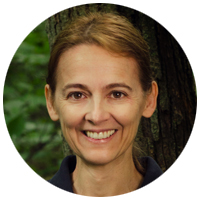 |
Inés Ibanez:I think perspectives are associated with each particular individual. I can't really think of anything that only women bring. In my particular case, my perspective comes from my experiences, e.g., I’ve lived in five different countries and worked at 11 universities. |
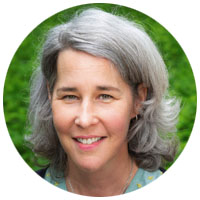 |
Pam Jagger:My personal view is that perspective comes from experience, and that experience is a function of three things: opportunity, hard work, and luck. In my field (applied economics and policy analysis), strong evidence has emerged of implicit bias against women, which affects opportunity. My concern is that women have an equal opportunity to bring their experience to the field. I’m working with a group of female scholars from the Global South to build networks and resources that will allow them to excel at their home institutions. They key is to make sure they have opportunity—hard work is intrinsic, and luck is luck! |
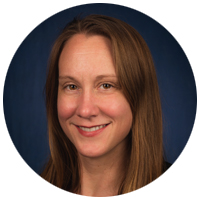 |
Shelie Miller:Women are often underrepresented in STEM fields, although that's not the case in many environmentally oriented disciplines. In fact, the population of our undergraduate environmental program (Program in the Environment) is about 70 percent female. There have been a number of theories why environmental disciplines attract women at greater rates. One of the main reasons associated with higher representation seems to be the direct connection to real-world impact when trying to solve environment and sustainability challenges. |
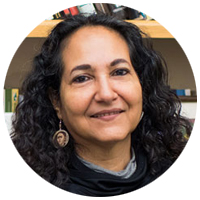 |
Ivette Perfecto:We all bring different perspectives based on our lived experiences. As a Latinx woman who grew up in Puerto Rico, I have first-hand experience with colonization and imperialism. This experience gives me an appreciation for how Native American and other indigenous and non-indigenous forest people feel when conservationists from the Global North or the dominant culture come to their regions to argue that those areas should be left for wildlife conservation and people should be expelled. I also think that women have a different perspective and approach to agroecology. That is why I was one of the founding members of the Alliance for Women in Agroecology (AMA-AWA). This is an organization of women agroecologists in Latin America, the United States, and Europe who are interested in gender issues in agroecology as a science, an agricultural practice, and a movement. The number of women involved directly in agriculture has been growing in most parts of the world, while the technicians, scientists, extension agents, and educators in agriculture continue to be dominated by men. Women agroecologists are more inclined to connect with women farmers and understand the challenges they face in a male-dominated culture. |
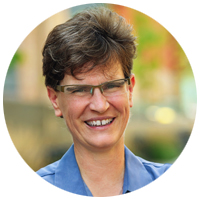 |
Michaela Zint:In my case, I work primarily with women because they are the ones that tend to teach environmental sustainability in formal K-12 settings, as well as non-formal settings, although I know of many men who are similarly dedicated. Part of the reason I particularly enjoy my research is because all the teachers are so collaborative, supportive, and appreciative to work with. In the United States and more so internationally, working with women is also often the only way to truly get to know particular aspects of respective culture due to them typically serving as the primary caregivers and [taking care] of household responsibilities. Women also have been the force behind key (inter)national policies and changes at the community level, often through highly participatory approaches. |
What advice would you give to young women entering the field?
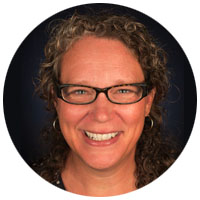 |
M’Lis Bartlett:Build yourself a team and make an effort to find multiple mentors. The women I went to school with still meet regularly. We read each other's work, we grapple with theoretical issues, take care of each other’s kids, and are there when someone has something to celebrate or is dealing with grief. Regarding mentoring, there are a lot of folks out there who want to support you and your work. The model of having one mentor that supports all your needs is outdated. Build relationships with folks who can support your academic goals, your career path, and help you negotiate raising children and a career—if that’s your goal. Remember that mentoring is a two-way relationship. Share your successes as well as your needs and offer to assist your mentor as you are able. |
 |
Rosina Bierbaum:Many of the most interesting problems facing the planet are at the intersection of fields—for example, what will move people to change their over-consumption of natural resources and lead to more resilient and equitable societies? To answer that requires understanding of behavior, energy flows, environmental justice, policy, and ecosystems. Don’t specialize in a narrow area too soon—learn the languages and tools of different disciplines, as you will most likely work in a team to solve intractable problems throughout your career. You need to value the insights from multiple fields. |
 |
Lisa DuRussel:I want to quote The Women’s Landscape Equality (re)Solution: “We know the advantages of diversity. We know that without diversity, ecosystems become unstable.” Women are entering the landscape architecture field at growing rates—but are still largely underrepresented as leaders in the profession. There is still much to be done to build equity. As female practitioners, we need to support each other, advocate for each other, raise each other up, and make our own space. The time is now! Landscape is it! Participate in some of the initiatives for gender justice in the profession: WxLA, the VELA Project, and ASLA’s Women in Landscape Architecture Professional Practice Network. |
 |
Sara Hughes:Come as yourself, don’t be afraid to take up space, find good mentors, and create the community you need. |
 |
Inés Ibanez:Be sure you enjoy the process; don’t do it just for the end goal. |
 |
Pam Jagger:There is no limit to the number of challenging problems in the field of environment and sustainability. It can be overwhelming. Find something you are truly passionate about and stick with it. Life and work have lots of ups and downs—you need to find that central motivating thing that will keep you going even when things aren’t shaping up as planned. Being surrounded by people who thrive on problem solving is key; the best will challenge you to think in new and creative ways. |
 |
Shelie Miller:It is always easier to become less technical than more technical over time. As you progress in your education and your career, it becomes increasingly difficult to pick up new technical skills. So take that challenging math class, learn the new coding language, or pick up the new software skill when you have the chance, because you may not be able to dedicate the time to building that technical skill set later on. In addition, women in STEM who demonstrate management and leadership skills are often recruited into administrative positions relatively early in their careers. That's great in many ways because we need more women in leadership positions, particularly in STEM fields. At the same time, going into management reduces the amount of time you can dedicate to using your actual science or engineering skill set. If you are truly passionate about the nerdy science and analysis stuff, be sure to make that a priority since it will be difficult to transition back to a more technical job later in your career. |
 |
Ivette Perfecto:Be confident and believe in yourself. Don’t try to imitate your male colleagues, you will just repeat their mistakes. The world has been run by men for most of our history and look at the mess we are in. It's time for a different, more compassionate approach, and, as women, we may have something better to offer. |
 |
Michaela Zint:Women tend not to reach out for mentoring or receive as much mentoring as men in my experience. Asking other women for guidance can be incredibly helpful and, I think, is critical to professional success. If you are not comfortable asking for help (I still struggle with this), I recommend the books by Linda Babcock and Sara Laschever: Women Don't Ask and Ask For It. Within the context of sustainability, my role models are incredible women such as Wangari Maathai and Gro Harlem Brundland (e.g. see chapters in the book Nature’s Allies by Larry Nielsen). When I struggle, I read about their transformative contributions, or those by young emerging leaders such as the "EE 30 Under 30." |
How would you like to see your research/teaching progress in upcoming years?
 |
M’Lis Bartlett:I am very interested in collective efforts for social and environmental change. I don't think the big issues of our day will be solved alone—the more perspectives we have the stronger our efforts and impact will be. I am currently collaborating with SEAS alumna Mona Munroe-Younis on a project in Flint that is looking at the just redevelopment of the former Buick City plant, now a brownfield, as a place that can support a new green economy as well as open space for the local community. I am excited to engage the SEAS community in this project as it moves forward. |
 |
Rosina Bierbaum:My work is increasingly linking science to practice in designing and implementing projects that will simultaneously improve livelihoods and resilience to a changing climate, both domestically and internationally. Adaptation to climate change has been under attended to for decades, and involving students in monitoring, evaluating, and distilling the very best practices from ongoing efforts to increase resilience can accelerate the needed transition to a sustainable world. Climate change will permeate every facet of students’ lives, and we must equip them to confront it in whatever field of work they pursue. The new U-M Climate Solutions Certificate program is an effort to do just that! |
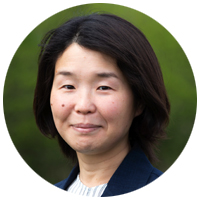 |
Ayumi Fujisaki-Manome:I grew up and received degrees in Japan, whose gender equity is far behind other developed countries. In my field (geoscience), the ratios of female professionals are very low in Japan despite there being many talented young women. The situation is different here; women in the United States are outstanding players, but I also know that retention of women in the academic-to-workforce pathway is still tough in my field. In upcoming years, I hope that barriers in that pathway will continue to decrease, that young women can go on the pathway more easily, and that young women here can set a good example to the world. |
 |
Sara Hughes:I plan to develop research and teaching projects that are positioned to inform policy and empower communities. |
 |
Inés Ibanez:Ever changing; [I plan to] never stop learning. |
 |
Pam Jagger:I’m honestly not sure. In some ways I feel like I’ve been doing the same thing for a long time. I’m not ready to make a big change, but I also can’t see continuing to do the same thing for another 20 years. Most of my research involves primary data collection in low-income countries. It takes years to obtain funding, design the research, analyze the data, and produce outputs. I love what I do, but the pace is slow. I can see making a shift to a role that allows for more research translation for a range of stakeholders, and direct engagement with policy makers and program implementers. |
 |
Michaela Zint:I think it is critical not to just have sustainability expertise but the knowledge, skills, and mindsets to inspire and empower others to lead. That is part of the reason I am so grateful for the opportunity to be associate dean. It provides me the opportunity to share and learn from others about leadership. I hope to develop a course on leadership skills, with a special focus on empowering women to take on leadership roles. |
We invite you to explore more of our series, Women’s History Month: Perspectives from SEAS Women in Sustainability. We'll be adding more "voices" and stories throughout the month.

